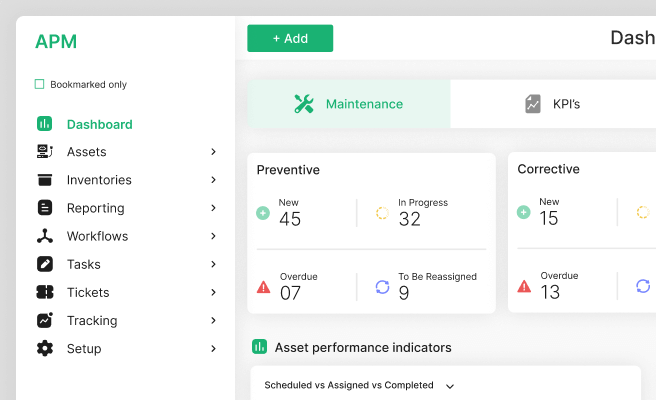Feature Adoption
<p>Feature adoption refers to the process of users starting to utilize a new feature in a product or service. It is a critical aspect of product success, indicating how well a feature resonates with users and contributes to the overall value of the product. Effective feature adoption can lead to higher user satisfaction, increased retention rates, and overall product growth.</p>
<p>Historically, feature adoption has been a challenge for many companies, as it requires not just rolling out a new feature but also ensuring that users are aware of it and understand its value. The key to successful feature adoption lies in strategic planning and execution, which includes understanding user needs, clear communication, and continuous monitoring of feature usage.</p>
<h2>Importance of Feature Adoption</h2>
<p>Feature adoption is crucial for several reasons. Firstly, it showcases the full value of your product to users, encouraging them to engage more deeply with it. High adoption rates mean users are finding the features useful, which can reduce churn and increase loyalty. Additionally, feature adoption helps in validating the product development efforts and informs future enhancements.</p>
<p>For example, consider a climate tech company that introduces a new feature for real-time monitoring of carbon emissions. If users adopt this feature widely, it not only validates the effort invested in developing it but also enhances the product's overall impact on sustainability. This, in turn, can attract more users and increase market share.</p>
<h3>Metrics to Measure Feature Adoption</h3>
<p>Several key metrics help in measuring feature adoption:</p>
<ul>
<li><strong>Feature Adoption Rate:</strong> This is the percentage of active users who have used the feature at least once during a specific period. For instance, if 500 out of 1000 monthly active users have used the feature, the adoption rate is 50%.</li>
<li><strong>Breadth of Adoption:</strong> This metric measures how widely a feature is being used across the user base. A broader adoption indicates that the feature has universal appeal.</li>
<li><strong>Depth of Adoption:</strong> This measures how frequently users engage with the feature. Features that are used regularly by users are considered to have a high depth of adoption.</li>
<li><strong>Time to Adopt:</strong> This is the amount of time it takes for users to adopt a new feature after it is launched. Shorter adoption times indicate that the feature is intuitive and immediately valuable.</li>
</ul>
<p>Tracking these metrics allows companies to understand how well their features are performing and identify areas for improvement. Tools like <a href="https://www.hotjar.com/blog/feature-adoption/" style="color:#2896FF; text-decoration:underline;">Hotjar</a> and <a href="https://www.userpilot.com/blog/feature-adoption/" style="color:#2896FF; text-decoration:underline;">Userpilot</a> offer comprehensive insights into feature adoption.</p>
<h3>Strategies to Improve Feature Adoption</h3>
<p>Improving feature adoption involves a combination of effective communication, user education, and continuous feedback. Here are some strategies:</p>
<ul>
<li><strong>In-App Announcements:</strong> Use in-app messages and tooltips to introduce new features to users when they are most likely to engage with them. For instance, if a new feature is added to a project management tool, an in-app announcement can trigger when users are managing tasks.</li>
<li><strong>Personalized Onboarding:</strong> Tailor the onboarding experience to showcase relevant features based on user roles and needs. This ensures that users see the value of the feature in their specific context.</li>
<li><strong>User Guides and Tutorials:</strong> Provide detailed guides, video tutorials, and FAQs to help users understand how to use the new feature effectively. This reduces the learning curve and encourages adoption.</li>
<li><strong>Feedback Loops:</strong> Continuously gather feedback from users about the new feature. This helps in making necessary improvements and demonstrates that user opinions are valued.</li>
</ul>
<p>For example, companies like <a href="https://www.whatfix.com/blog/feature-adoption/" style="color:#2896FF; text-decoration:underline;">Whatfix</a> and <a href="https://airfocus.com/blog/how-to-measure-increase-feature-adoption/" style="color:#2896FF; text-decoration:underline;">Airfocus</a> offer platforms that facilitate in-app guidance and feedback collection to enhance feature adoption.</p>
<h3>Challenges in Feature Adoption</h3>
<p>Despite the best efforts, companies may face several challenges in feature adoption:</p>
<ul>
<li><strong>User Awareness:</strong> Users may not be aware of the new feature, especially if it is not communicated effectively.</li>
<li><strong>Complexity:</strong> If the feature is too complex or not user-friendly, users may be hesitant to adopt it.</li>
<li><strong>Lack of Perceived Value:</strong> Users need to see the clear benefit of using the new feature. If they do not perceive value, they are unlikely to adopt it.</li>
<li><strong>Resistance to Change:</strong> Users may be resistant to changing their existing workflows and adopting new features.</li>
</ul>
<p>Overcoming these challenges requires a strategic approach that includes clear communication, user education, and continuous improvement based on user feedback.</p>
<h2>Conclusion</h2>
<p>Feature adoption is a critical component of product success. By understanding and addressing user needs, companies can ensure that new features are not only adopted but also add significant value to the product. Through effective communication, personalized onboarding, and continuous feedback, companies can drive higher adoption rates and achieve their product goals.</p>
<p>For those looking to improve their feature adoption strategies, exploring resources from trusted sources such as <a href="https://www.dovetail.com/product-development/what-is-feature-adoption/" style="color:#2896FF; text-decoration:underline;">Dovetail</a> and <a href="https://userpilot.com/blog/feature-adoption/" style="color:#2896FF; text-decoration:underline;">Userpilot</a> can provide valuable insights and best practices.</p> <p>Increase user engagement that converts your demos into sales. Optimise your UX strategies with our audits.
<p>Fill out the <a href="https://tally.so/r/n97pxQ" style="color:#2896FF; text-decoration:underline;">UX Audit form</a> to get started. Ready to discuss your needs? <a href="https://cal.com/akhilak/what-if-design?duration=25" style="color:#2896FF; text-decoration:underline;">Book a consultation call</a> with us today.</p></p>

Let's scale your impact with great design.
Free consultation, no sales pitch
Thank you! Your submission has been received!
Oops! Something went wrong while submitting the form.
Let’s talk
Nothing great is built alone.
Let’s connect about your vision, our work and how we can collaborate.
Get in touch

